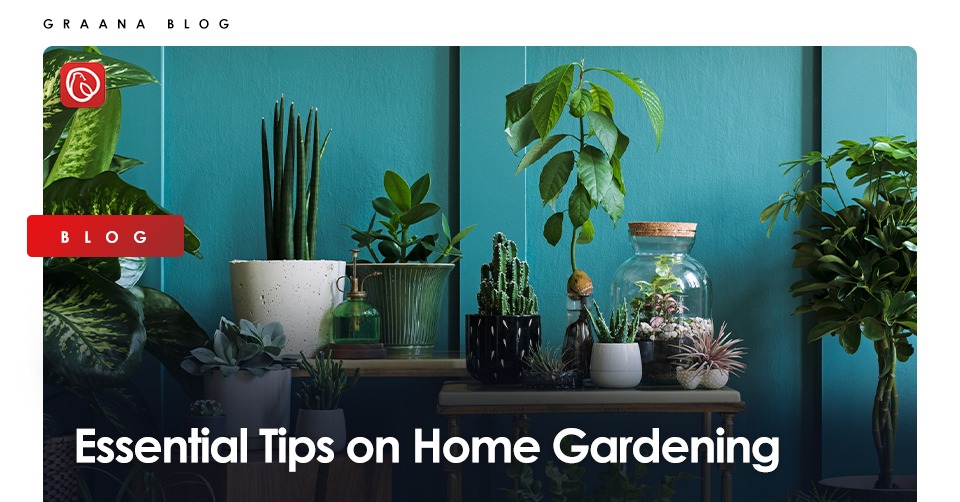To become a pro in gardening asks for not months but years of practising, learning and re-learning. If you have been failing from continuously trying, this article will guide some of the essential tips to keep your garden blooming and happy. Putting in time and investment in the important aspects of your life will surely add value with an ultimate lush green lawn.
-
Vegetable Soup
If you are in the habit of having vegetable soup often in your lunch or dinner, then make sure not to drain the vegetable water left from boiling. Pour in the water in your plants and on the bald spots of your lawn. Give it some time and be surprised with the results and improvements.
-
Chamomile Tea
Pouring or misting chamomile tea onto the surface of your plants 2-3 times a day will help young seedlings safeguard themselves from fungus. Chamomile tea consists of anti-fungal ingredients to remove harmful pathogens from the soil. Let your grass and plants enjoy the benefits of this tea and watch it grow thick and luscious.
-
Coffee for the soil
Just like you, your soil needs coffee as well. After brewing, remember not to toss away the used coffee beans, which contain trace minerals that help retain moisture in the soil. It also acts as an excellent base for flowering plants. Enrich your young ones with the amazing smell and advantages of coffee.
-
Hold down on the trim
Everyone likes the feeling and beauty of trimmed grass but cutting too short can take its toll. Cutting too short will make the grass grow even faster. The more you mow, the more herbicides and water it will ask for. If your grass is three inches tall, do not cut more than an inch. Similarly, avoid mowing your lawn after watering or when it’s wet. Doing so will compress the soil, which ultimately will not let your roots breathe. Therefore, this can lead to bald spots and grass dying.
Avoid nighttime watering
Your lawn also operates with the clock of the sun! The best time to water is during the day when the sun can also dry out excess water. Prolonged moisture in the soil invites many diseases. Get hold of your garden by applying this tip.
-
Know your environment
Many gardeners ignore the fact that each plant has its preferences for growth. You cannot just pick a random spot; start planting and expect produce.
Before starting, analyze the location of gardening for each plant that you are growing. If you are unsure, do extensive research on the plant and its requirements for sunlight, location and water etc.
-
Sunlight and Shade
Each plant needs have its own need for the right amount of sunlight exposure and shade. Many food-bearing plants prefer 6 to 10 hours of sun exposure every day. At the same time, there are also some crops that require prolonged exposure to the sun, such as the citrus tree.
Speaking about shade, many edibles need partial shade ranging from four to six hours. Such plants either grow smaller or are less productive. If you are planting in shady areas, increase the number of plants to get a more desired production and yielding.
-
Know your soil
Soil is the lesson one and number one factor that will determine the health of your plants. To begin with, take a small amount of your soil, wet it and try to form a ball; if it crumbles, that means it’s sandy; if it stays tight, its clay; if it forms a loose ball, that means its loamy.
Plants function best in loamy soil, which has a proper balance of clay and silt, providing a good drainage system. If your soil is clay or sandy, add some amendments, such as compost or peat moss, to add nutrients and correct its structure. Perhaps, you can also consider container or raised-bed gardening by purchasing soil.
Introducing companion planting
Think of your garden as a community that needs neighbours for better functioning. Companion planting is a method of putting together crops or plants that benefit from each other’s company such as, corn stalks provide support to beans whereas, beans provide nitrogen to corn that helps in their growth. Chives improve the growth and flavour of apples, berries, tomatoes, and carrots, while carrots benefit from onions and leeks because they repel carrot flies.
However, you also need to be aware of the plants that can become troublesome neighbours. For example, sage can injure cucumbers. Garlic, onions, and shallots stunt beans; peas, kohlrabi, and tomatoes negatively affect one another.
Lastly, you also need to avoid planting crops together that battle the same challenges. E.g., tomatoes and corn attract the same worms while tomatoes and potatoes together are susceptible to the same blight. Many beginners are unaware of these important concepts, so we would recommend being fully aware of the vast knowledge of gardening.
-
Adding mulch
Applying a layer of mulch two to three inches deep around each plant will help cut down on weeds by blocking the sun exposure. This technique will also minimize moisture retention by evaporation; this way, you will not have to water again and again. If you do not have access to mulch, put down shredded leaves, pine straw, or other locally available material to get a more polished look.
-
Feed plants regularly
The importance of feeding your plants religiously is as vital as starting with good soil. A soil that is thoroughly fed with high-quality nutrient content will also perform the best. A month after getting into gardening, start feeding your soil and garden with super plant food.
Other factors
Other additional factors that can make a huge difference in your gardening must also be taken into consideration. For example, if you live in an industrial or commercial area. There could be the threat of chemical runoff from a field or neighbouring yard or soil contamination caused by past industrial activities such as mining. If you are stuck in this situation, considering container gardening or a raised-bed garden would be the best option. Other factors to consider are elevation, your septic system, proximity to large, established trees that are also competing for water and nutrients.
Conclusion
Gardening can make a huge difference if you are trying to cut loose on the food expenses. However, the main key is maintenance. According to the National Gardening Association, you can grow a half-pound of produce per square foot of garden space. Homegrown food also tastes better.
Growing food at home has become a huge trend. Still, the whole dynamic of home gardening has also been oversimplified to the point that people start gardening without any realistic goal setting in terms of money and time investment. Just like any other learning, it requires proper skill learning and effort. This is achievable if you put your heart and mind into it. It is no doubt a long learning process that keeps improving with each season.




